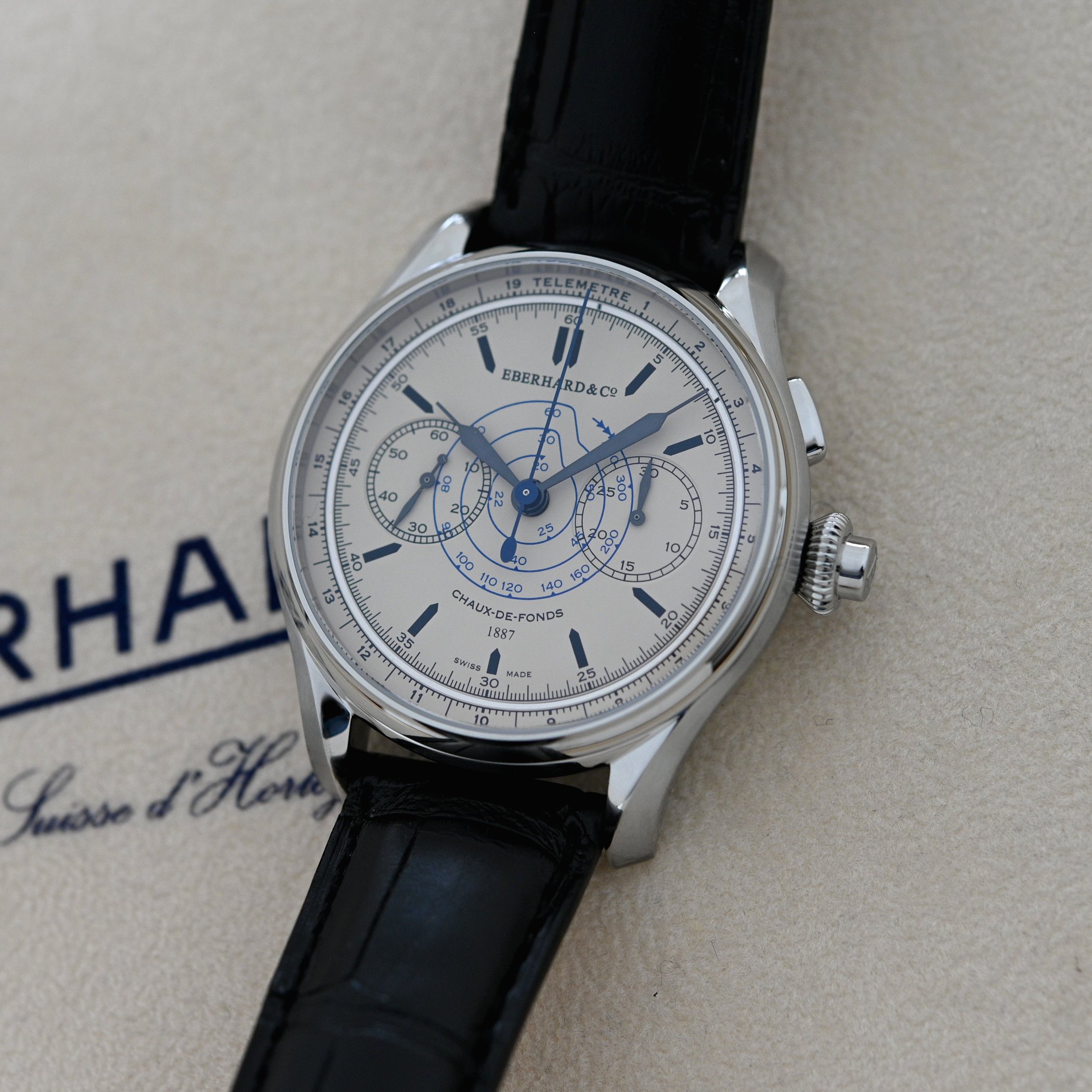Eberhard & Co. was founded in 1887 by Georges Eberhard in La Chaux-de-Fonds and had established himself as a supplier of innovative, technically advanced chronographs until 1919. Although the independent trademark is known to Italian collectors, and the chrono-4 model inspired by the streak cars, which were inspired by the streak cars, could be the racial administrations with a course of racial. Wider audience. In order to take this gap into account, Eberhard created the 1887 collection, which was inspired by historical chronographs in the brand's museum. One of the most attractive retro-inspired models in the collection is the Chronograph 1887 Limited Edition. This demanding flyback chronograph, inspired by the chronographs of the 1930s, is carried out in a contemporary case, is driven by a contemporary manual conversion movement and manages to cut a cutting retro-chic figure.


Eberhard's mastery of bracelet chronograph around the turn of the 20th century is up up there with some of the more well-known names such as Longines, Universal Genève, Lemania and Landeron. In 1919, Eberhard produced his first chronograph wristwatch, which is considered the most advanced single-pusher chronograph of his time. In 1935, the brand introduced an innovative double-push chronograph that offered stop and start functions without the need to reset to zero. Three years later, Eberhard produced the first chronograph for one hour, followed by his first chronograph of the split seconds.


The muses behind the models of Chronograph in 1887 are Eberhard's historical chronographs. While the dial repeats the layout, the Telemeter scale and the central spiral of the chronograph of 1935, it is a synthesis in a contemporary key to the chronographs of the 1930s. The stainless steel case, for example, is a winning mix of old and new. The 41.5 mm housing size is significantly up to date, with a robust height of 13.9 mm, sapphire crystals on both the front and on the back and a depth of 50 meters. In contrast, the oversized crown has a Vintage Pilot's Watch atmosphere, and the lyre is a flair of the 1950s.


Flyback complications came from the 1930s and were used by pilots to carry out fast, consecutive time measurements during the missions. The rectangular handle over the crown is used to start and stop the chronograph. When the chronograph is stopped, the coaxial handle is used in the crown to reset it. However, when the chronograph runs, the trigger activates the Flyback function in the crown, and the central chronograph hand flies back to zero to start a new measuring range.


Available in three dials, including salmon and black, we photographed the eggshell or the off-white output. All three dials take over the design features of the chronograph from 1935 with a peripheral telemeter scale and a strange blue spiral in the middle of the dial with chevron on the tail and cross both points. More than an attractive design feature, the digits on the spiral (from 20 to 400 km/h) correspond to the tachymeter scale.


One advantage of a large housing size is that the dial gives plenty of space to present its charming retro character. Although today there is no very sought -after function on a chronograph, the Telemeter scale was once an important ally in the war theaters to calculate the fire area in combat. Here the scale for telemeter/minutes is expressed in 1/5th second readings. The central area of the dial is separated by a steel ring and has a classic bicompax layout with 30-minute times at 3 a.m. and seconds at 9 a.m. Horizontally oriented and confused through the blue spiral of the brand and have traditional black railway rails. The black dials of egg shells and semi-mats use hourly indices, while the salmon/bronze dial has Arabic digits at 12 and 6 a.m. The hour and the tiny hands in the stylus style and tiny hands have often used on vintage pilot watches.


The manual turning movement was developed in cooperation with the manufacturing office, the high-end department of Sellita. With a Sellita Amt5100 basis, the manual westing EB 280 controls the flyback chronograph with a column wheel. The movement has a special lever with which the chronograph reset -presser can be moved coaxially with the crown. Another tailor -made touch is the shield -shaped bridge, which is decorated with Côtes de Genève. Eberhard, who is known as Poinçon de Maître or Maker's Mark, registered his sign in 1892. With a frequency of 28,800 VPH, a robust 62-hour performance reserve, the movement is further protected by an Inkabloc-Anti shock device, an anti-magnet nivaflex main spring and feating hacking seconds.
The three chronography references from 1887 are combined with alligator leather belts and steel collegi. They are limited editions of 250 pieces per color and retail for EUR 6,960 EUR.
You can find more information in Eberhard-co watches.ch.
https://monochrome-watches.com/first-look-ebeberhard-and-chronographe-1887-limiteeeb-280-flyback-chronograph-amt-am00-specs-price-live-pics/